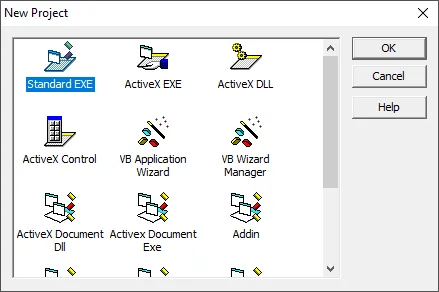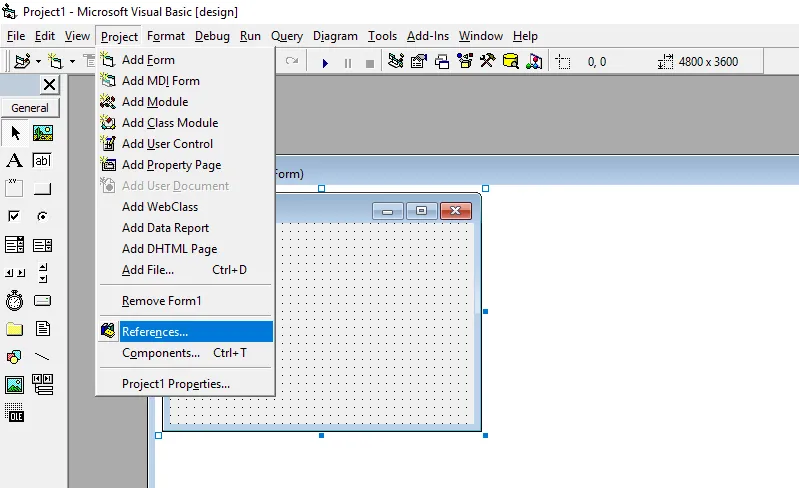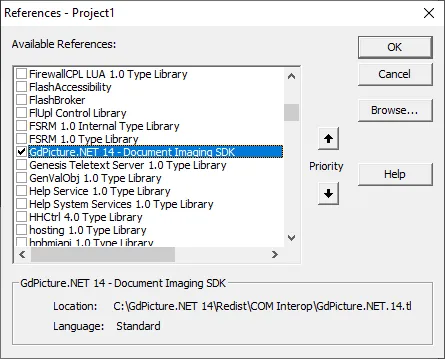Add PDF functionality with Visual Basic
This guide explains how to integrate Nutrient .NET SDK (formerly known as GdPicture.NET SDK) into your application.
About Nutrient .NET SDK
Nutrient .NET SDK is a cross-platform developer solution for building intelligent PDF and document processing applications. This toolkit enables you to compose, display, capture, edit, and print documents. You can build applications using Nutrient .NET SDK with numerous development environments and deploy these applications to different platforms.
Prerequisites
Before proceeding with this guide, ensure your development environment meets the following requirements.
.NET 8.0 or higher (cross-platform)
- .NET SDK 8.0 or higher — Install the latest stable version from the Microsoft website(opens in a new tab).
- Supported operating systems — Windows, macOS, and Linux.
- Development tools — Visual Studio 2022 (17.6+) or Visual Studio Code with C# extension.
- Command-line tools — Ensure the .NET CLI is available and configured in your system path.
.NET Framework 4.6.2 or higher (Windows)
- .NET Framework 4.6.2+ — Preinstalled on Windows or available from the official Microsoft Download Center.
- Supported operating systems — Windows 10 or later.
- Development tools — Visual Studio 2019 (or newer) with the .NET framework development workload installed.
For more information on the supported frameworks and operating systems, refer to our system compatibility guide.
Installing Nutrient .NET SDK
The best way to install Nutrient .NET SDK is through NuGet repositories. To view a list of available packages, refer to the download Nutrient .NET guide.
Alternatively, use our ready-made bootstrap project for new setups.
Download example projectActivating the trial license
To activate a trial license, follow the steps below:
- In Visual Studio, create a
LicenseManagerobject in the code file where the application loads before using any of the methods of Nutrient .NET SDK. - Pass the license key to the
RegisterKEYmethod of theLicenseManagerobject.
Set the license using the
LicenseManageronce before making any calls to the SDK. This activates the license for the entire assembly. Make sure your application initializes and sets the license only once.
LicenseManager licenseManager = new LicenseManager();licenseManager.RegisterKEY("");Dim licenseManager As New LicenseManagerlicenseManager.RegisterKEY("")CLicenseManager licenseManager;licenseManager.CreateDispatch(L"GdPicture14.LicenseManager");licenseManager.RegisterKEY(L"");BSTR bstrLicense = ::SysAllocString(L"");if (bstrLicense != NULL){ _LicenseManagerPtr licenseManager(__uuidof(LicenseManager)); VARIANT_BOOL result = licenseManager->RegisterKEY(bstrLicense); ::SysFreeString(bstrLicense);}BSTR bstrLicense = ::SysAllocString(L"");if (bstrLicense != NULL){ _LicenseManagerPtr licenseManager; licenseManager = (_LicenseManagerPtr)CreateComObject(CLSID_LicenseManager); licenseManager->RegisterKEY(bstrLicense); ::SysFreeString(bstrLicense); bstrLicense = NULL;}var LicenseManager1: Variant;begin LicenseManager1 := CreateOleObject('GdPicture14.LicenseManager'); LicenseManager1.RegisterKey('');var licenseManager;licenseManager = new ActiveXObject("GdPicture14.LicenseManager");licenseManager.RegisterKey("");long ll_resultOLEObject licenseManagerlicenseManager = CREATE OLEObjectll_result = licenseManager.ConnectToNewObject("GdPicture14.LicenseManager")licenseManager.RegisterKey("")Dim licenseManager As New LicenseManagerCall licenseManager.RegisterKEY("")Dim licenseManager As New GdPicture_NET_14.LicenseManagerlicenseManager.RegisterKey ("")Leaving the license key as an empty string activates the SDK in trial mode. After purchasing a commercial license, replace the empty string with your license key.
Starting from version 14.2.94, a trial key is no longer required. As shown in the examples above, setting the key to an empty string ("") enables trial mode.
Your first application using COM
Nutrient .NET SDK includes a COM edition that can be used like a COM/ActiveX component with IntelliSense support in environments supporting this technology (for example, Visual Basic 6, Visual C++ with MFC, HTML pages, Delphi, Visual FoxPro, and more).
This edition is automatically registered on your computer when installing the Nutrient .NET SDK package.
The DLL is located in [INSTALLATION FOLDER]\Redist\COM Interop\, and it can be registered on other computers using the regasm command with admin privileges as demonstrated below:
%SystemRoot%\Microsoft.NET\Framework\v4.0.30319\ **regasm.exe** GdPicture.NET.14.dll /codebase /tlb
The DLL can be unregistered using regasm.exe /u, as demonstrated below:
%SystemRoot%\Microsoft.NET\Framework\v4.0.30319\ **regasm.exe /u** GdPicture.NET.14.dll /codebase /tlb
Visual Basic 6
This section provides you with a step-by-step guide to getting started using Nutrient .NET SDK with Microsoft Visual Basic 6.
You can find three sample projects demonstrating the use of several Nutrient .NET SDK features using COM Interop in the [INSTALLATION FOLDER]\Samples\WinForm\vb6 folder.
IntelliSense is fully supported in Visual Basic 6.
Start with a new project (or open an existing project) and click OK.

Click Project in the application menu, and then select References...

Scroll through the list of available references, check the GdPicture.NET 14 - Document Imaging SDK entry, and click OK.

Using the Object Browser (accessed with the F2 shortcut), you’ll see all the classes, enumerations, methods, properties, etc.

Now you can use Nutrient .NET SDK like any other object in your code.